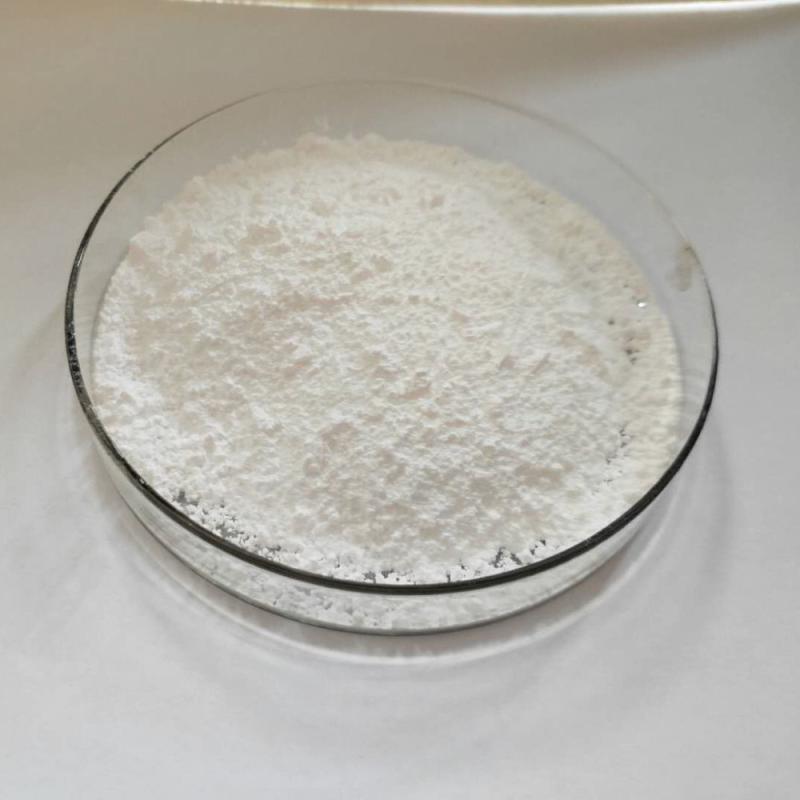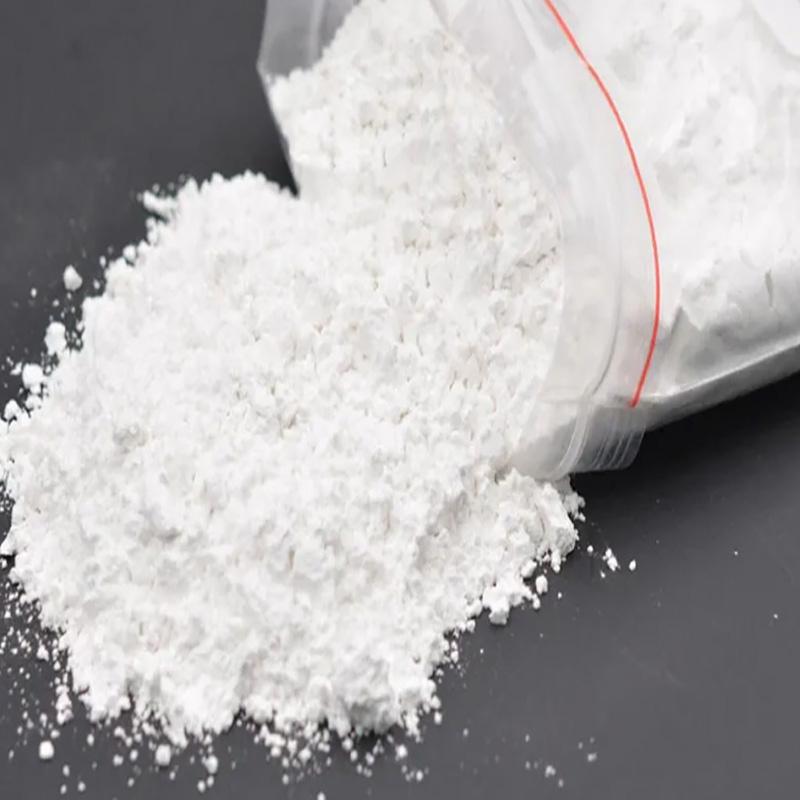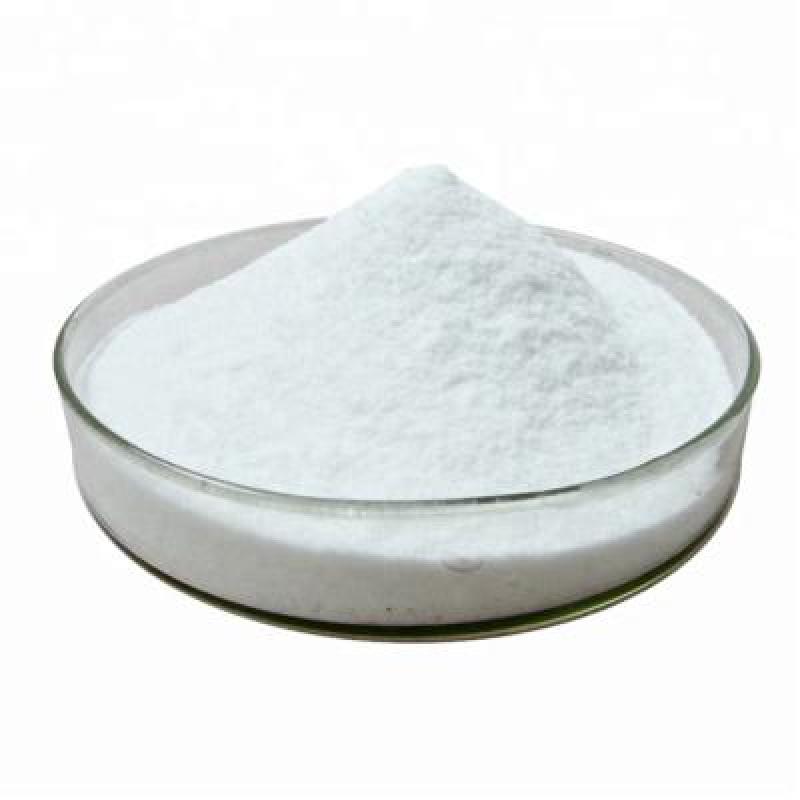AzaconazoleChemical name:1-[[2-(2,4-dichlorophenyl)-1,3-dioxolan-2-yl]methyl]-1,2,4-triazole Molecular formula: C12H11Cl2N3O2Structural formula:Molecular weight: 300.1406CAS No. : 60207-31-0Physical and chemical properties:Density: 1.51 g/cm3Melting point: DHS 112.6 CBoiling point: 460.7ºC at 760 mmHgFlash: DHS 232.4 CRefractive index: 1.658Storage conditions: 0-6ºC
Связаться сейчас
Common name: TebuconazoleChemical name:1-(4-Chlorophenyl)-4,4-dimethyl-3-(1,2,4-triazole-1-yl-methyl)pentane-3-olMolecular formula: C16H22ClN3OStructural formula: Molecular weight: 307.82CAS No. : 80443-41-0Product description:Tebuconazole is a kind of high efficiency, broad spectrum, internal absorption triazole bactericidal pesticide, with three functions of protection, treatment, eradication, wide bactericidal spectrum, long duration of efficacy. It was found that tebuconazole, like all triazole fungicides, could inhibit the biosynthesis of ergosterol from fungicide.
Связаться сейчас
Product description:Tebuconazole is a sort of high performance, large spectrum, inner absorption triazole bactericidal pesticide, with three capabilities of safety, remedy, eradication, huge bactericidal spectrum, long length of efficacy. it became located that tebuconazole, like several triazole fungicides, could inhibit the biosynthesis of ergosterol from fungicide. tebuconazole is used as seed treatment agent and foliar spray all over the global. it has a extensive bactericidal spectrum, excessive activity and long length of efficacy.
Связаться сейчас
Common name: AzaconazoleChemical name:1-[[2-(2,4-dichlorophenyl)-1,3-dioxolan-2-yl]methyl]-1,2,4-triazole Molecular formula: C12H11Cl2N3O2Structural formula:Molecular weight: 300.1406CAS No. : 60207-31-0Physical and chemical properties:Density: 1.51 g/cm3Melting point: DHS 112.6 CBoiling point: 460.7ºC at 760 mmHgFlash: DHS 232.4 CRefractive index: 1.658Storage conditions: 0-6ºC
Связаться сейчас
Product description:Propiconazole is a triazole fungicide, also referred to as a dmi, or demethylation inhibiting fungicide due to its binding with and inhibiting the 14-alpha demethylase enzyme from demethylating a precursor to ergosterol. with out this demethylation step, the ergosterols are not protected into the growing fungal cellular membranes, and cellular increase is stopped.Common name: PropiconazoleChemical name:1-[[2-(2,4-dichlorophenyl)-4-propyl-1,3-dioxolan-2-yl]methyl]-1H-1,2,4-triazoleMolecular formula: C15H17Cl2N3O2 Structural formula:Molecular weight: 342.22CAS No.
Связаться сейчас
Common name: PropiconazoleChemical name:1-[[2-(2,4-dichlorophenyl)-4-propyl-1,3-dioxolan-2-yl]methyl]-1H-1,2,4-triazoleMolecular formula: C15H17Cl2N3O2 Structural formula:Molecular weight: 342.22CAS No. : 60207-90-1Product description:Propiconazole is a triazole fungicide, also known as a DMI, or demethylation inhibiting fungicide due to its binding with and inhibiting the 14-alpha demethylase enzyme from demethylating a precursor to ergosterol.
Связаться сейчас
Common name: EpoxiconazoleChemical name:1-[[3-(2-chlorophenyl)-2-(4-fluorophenyl)oxiran-2-yl]methyl]-1,2,4-triazole Molecular formula: C17H13ClFN3OStructural formula: Molecular weight: 329.76CAS No. : 135319-73-2Product description: Epoxiconazole is a fungicide active ingredient from the class of azoles developed to protect crops. In particular, the substance inhibits the metabolism of fungi cells infesting useful plants, and thereby prevents the growth of the mycelia (fungal cells). Epoxiconazole also limits the production of conidia (mitospores).
Связаться сейчас
Product description:Difenoconazole, also referred to as oxadifenazole, is a triazole fungicide and a sterol demethylation inhibitor. it has the characteristics of high performance, wide spectrum, low toxicity, and low dosage. an incredible kind of triazole fungicides with strong systemic houses. by using inhibiting the biosynthesis of ergosterol in pathogenic cells, it destroys the structure and characteristic of pathogen cell membranes. it is used in fruit trees, chemicalbook greens, wheat, potatoes, beans, melons, and so on.
Связаться сейчас
Common name: DifenoconazoleChemical name: 1-({2-[2-Chloro-4-(4-chlorophenoxy)phenyl]-4-methyl-1,3-dioxolan-2-yl}methyl)-1H-1,2,4-triazoleMolecular formula: C19H17Cl2N3O3Structural formula: Molecular weight: 406.26CAS No. : 119446-68-3Product description:Difenoconazole, also known as oxadifenazole, is a triazole fungicide and a sterol demethylation inhibitor. It has the characteristics of high efficiency, broad spectrum, low toxicity, and low dosage. An excellent variety of triazole fungicides with strong systemic properties.
Связаться сейчас
Product description:Epoxiconazole is a fungicide active element from the magnificence of azoles evolved to defend vegetation. especially, the substance inhibits the metabolism of fungi cells infesting beneficial plants, and thereby prevents the growth of the mycelia (fungal cells). epoxiconazole also limits the producing of conidia (mitospores). epoxiconazole become introduced to the marketplace thru basf se in 1993 and can be located in many products and product mixtures concentrated on a large wide form of pathogens in various plant life.
Связаться сейчас
Product description:Metalaxyl is an acylalanine fungicide with systemic feature.[3] its chemical name is methyl n-(methoxyacetyl)-n-(2,6-xylyl)-dl-alaninate. it may be used to govern pythium in a number of vegetable plants, and phytophthora in peas.
Связаться сейчас
Product Description:Pymetrozine is a non - cellular insecticide belonging to pyridinethimide or triazinone pesticide. Pymetrozine has tactile and endogenic activity to pests. In vegetation, it may be transported in every xylem and phloem. Therefore, it can be used as a foliar spray and soil remediation agent. Due to its correct transfer properties, newly grown branches can also be effectively covered after spraying stems and leaves.Common name: PymetrozineChemical name: (E)-4,5-Fihydro-6-methyl-4-((3-pyridinylmethylene)amino)-1,2,4-triazin-3(2H)-oneMolecular form
Связаться сейчас
Common name: PymetrozineChemical name: (E)-4,5-Fihydro-6-methyl-4-((3-pyridinylmethylene)amino)-1,2,4-triazin-3(2H)-oneMolecular formula: C10H11N5OStructural formula:Molecular weight: 217.23CAS No. : 123312-89-0Product description:Pymetrozine belongs to the pyridine (pyridinethimide) or triazinone class of insecticides and is a non - cytocytic insecticide. Pymetrozine has a tactile effect on insect pests and internal absorption activity. In plants, it can transport in both xylem and phloem. Therefore, it can be used as foliar spray and soil treatment.
Связаться сейчас
Bifenthrin is a pyrethroid insecticide. it's miles extensively used in opposition to ant infestations, consisting of the invasive crimson fireplace ant, through influencing its apprehensive machine. it has a high toxicity to aquatic organisms.Bifenthrin is poorly soluble in water and often remains in soil. Its residual half-life in soil is between 7 days and 8 months, depending on the soil type, with a low mobility in most soil types. Bifenthrin has the longest known residual time in soil of insecticides currently on the market. It is a white, waxy solid with a faint sweet smell.
Связаться сейчас
Structural formula:Molecular weight: 416.3CAS No. : 52315-07-8Product description:Cypermethrin (CP) is a synthetic pyrethroid used as an insecticide in large-scale commercial agricultural applications as well as in consumer products for domestic purposes. It behaves as a fast-acting neurotoxin in insects. It is easily degraded on soil and plants but can be effective for weeks when applied to indoor inert surfaces. Exposure to sunlight, water and oxygen will accelerate its decomposition.
Связаться сейчас
Common name: FenpropathrinChemical name: [cyano-(3-phenoxyphenyl)methyl] 2,2,3,3-tetramethylcyclopropane-1-carboxylateMolecular formula: C22H23NO3 Structural formula:Molecular weight: 349.42CAS No. : 39515-41-8 Product description:Fenpropathrin, or fenopropathrin, is a widely used pyrethroid insecticide in agriculture and household. Fenpropathrin is an ingestion and contact synthetic pyrethroid.
Связаться сейчас
Usage:Deltamethrin is a highly effective insecticide.
Связаться сейчас
Structural formula:Molecular weight: 505.2CAS No.
Связаться сейчас
Common name: FluroxypyrChemical name: 4-amino-3,5-dichloro-6-fluoro-2-pyridyloxyacetic acidMolecular formula: C7H5Cl2FN2O3Structural formula:Molecular weight: 255.03CAS No. : 69377-81-7 Product description:Fluroxypyr is an organic heterocyclic selective systemic and conductive post-emergence herbicide. Its general name is fluroxypyr, and other names include Zhipinling. It is suitable for the control of wheat, barley, corn and other gramineous crops. Various broad-leaved weeds.
Связаться сейчас
Common name: Metsulfuron-MethylChemical name: 2-(4-methoxy-6-methyl-1,3,5-triazin-2-ylcarbamoylsulfamoyl) benzoic acidMolecular formula: C14H15N5O6SStructural formula:Molecular weight: 381.36CAS No. : 74223-64-6Product description:Metsulfuron is an ultra-low dosage sulfonylurea herbicide for controlling medium-broad-leaved weeds in cereals. It can be transferred upward and downward in the plant body and used as a herbicide before and after wheat sprouts.Physical and chemical properties:The pure product is a white crystalline solid. m.p.158℃(163~166℃), vapor pressure 3.3×10-10Pa(25℃).
Связаться сейчас
Common name: ImazapicChemical name: 3-Pyridinecarboxylic acid, 2-[4,5-dihydro-4-methyl-4-(1-methylethyl)-5-oxo- 1H-imidazol-2-yl]-5-methyl-Molecular formula: C14H17N3O3Structural formula:Molecular weight: 275.3CAS No. : 104098-48-8Product description:Imazapic is a sulfonylurea systemic conduction typepost-emergence selective herbicide. After the stems and leaves are treated, they can be absorbed by the stems, leaves and roots of weeds.
Связаться сейчас
Common name: CLOPYRALIDChemical name: 3,6-dichloropyridine-2-carboxylic acidMolecular formula: C6H3Cl2NO2Structural formula: Molecular weight: 192CAS No. : 1702-17-6Product description:Clopyralid is a systemic phytohormone-type herbicide, which is a product of Dow Company in the United States. It has good herbicidal effects and strong selectivity. Entered the U.S. market in 1987 to control annual or perennial broad-leaved weeds in corn and sugar beet fields.
Связаться сейчас
Alachlor is an herbicide from the chloroacetanilide family. It is an odorless, white solid. The greatest use of alachlor is for control of annual grasses and broadleaf weeds in crops. Use of alachlor is illegal in the European Union and no products containing alachlor are currently registered in the United States.Its mode of action is elongase inhibition, and inhibition of geranylgeranyl pyrophosphate (GGPP) cyclisation enzymes, part of the gibberellin pathway. Common name: AlachlorChemical name: 2-chloro-N-(2,6-diethylphenyl)-N-(methoxymethyl)acetamide; Molecula
Связаться сейчас
Common name: DimethomorphChemical name:(E,Z)4-[3-(4-chlorophenyl)-3-(3,4-dimethoxyphenyl)acryloyl] morpholineMolecular formula: C21H22ClNO4Structural formula:Molecular weight: 387.86CAS No. : 110488-70-5Product description:It is a special fungicide of the class of oomycetes. Its function is to destroy the formation of cell wall membrane. It has an effect on all stages of the life history of oomycetes. It is especially sensitive in the formation stage of sporangia stems and oospores, at very low concentrations. Down (<0.25μg/ml) is inhibited.
Связаться сейчас


































